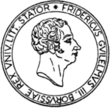The exhibition "Slide Rules and Alcohol" links the use of slide rules with the tasks of so-called Excise Officers.
In its original version, the slide rule was intended to replace point arithmetic, i.e. multiplication and division, with line arithmetic, i.e. addition and subtraction. Its function was based on the idea of logarithms, first published by John Napier in 1614. With the help of these logarithms, wooden sticks could be labeled in such a way that the addition of two distances corresponded to the multiplication of the numbers applied to the scales. This was an ingeniously simple idea, and so the slide rule in its perfected version, consisting of a body, tongue and runner, was used intensively for arithmetic for over three centuries. The more precisely the scales had been applied, the more accurately the result could be read.
One of the duties of the Excise Officers was to measure the size of barrels and first calculate how much liquid the barrel could hold when full. Special slide rules were used for this purpose, and through various calculation steps it was possible to determine the volume of the barrel.
Public tour: Every Saturday at 5 pm.
Prior registration is not necessary.
You can see an introductory video to the exhibition here:






